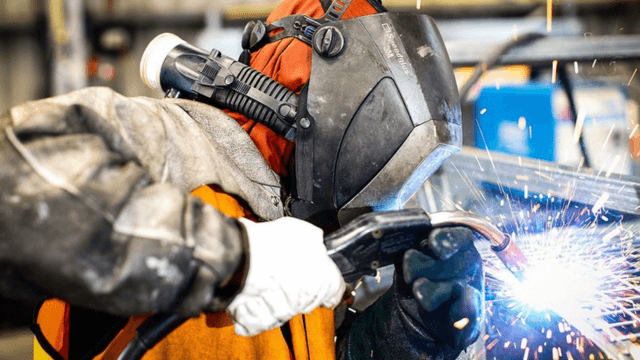The Evolution of Welding Safety Equipment

Welding is an essential industrial process, which has undergone significant advancements over the years. Along with the development of modern welding techniques, the safety equipment used by welders has also transformed significantly. In this article, we will delve into the evolution of welding safety equipment and how it has progressed to ensure the safety of welders.
1. Welding Helmets:
Traditionally, welders relied on basic welding goggles to shield their eyes from harmful light and sparks. These early goggles provided minimal protection. However, the introduction of auto-darkening welding helmets has revolutionized eye protection. Auto-darkening helmets, like the Speedglas welding helmet, automatically adjust the lens shade in response to the welding arc’s brightness. This innovation ensures that welders are constantly shielded from dangerous UV and IR radiation, resulting in enhanced eye safety.
2. Respiratory Protection:
As the understanding of the health risks associated with welding fumes has grown, so has the development of respiratory protection equipment. Early on, basic dust masks were used, which provided limited protection. Modern welding safety equipment includes powered air-purifying respirators (PAPRs) that filter out harmful fumes and gases. These systems deliver clean air to the welder, safeguarding their respiratory health.
3. Protective Clothing:
Welding involves exposure to intense heat, sparks, and molten metal. Traditional welding attire consisted of basic flame-resistant clothing. Nowadays, welding safety equipment includes flame-resistant coveralls, welding jackets, and welding aprons made from advanced materials designed to repel heat and sparks effectively. Special welding gloves and sleeves also protect the hands and arms from burns and injuries.
4. Ear Protection:
In the past, hearing protection was often overlooked in welding safety equipment. Welders were exposed to high noise levels generated by the welding process. Today, welders have access to high-quality ear protection in the form of earplugs or earmuffs. These protective devices help prevent hearing loss caused by prolonged exposure to loud welding noises.
5. Welding Curtains and Screens:
Welding safety isn’t limited to the welder alone; it extends to those working nearby. Welding curtains and screens provide a transparent barrier that protects bystanders from harmful UV and IR radiation while allowing them to observe the welding process. These curtains and screens have evolved to be more durable, effective, and adaptable to different welding environments.
6. Welding Fume Extractors:
The health risks associated with welding fumes are now well-documented. Welding safety equipment includes fume extractors designed to remove harmful welding fumes from the workspace. Advanced fume extraction systems ensure that welders are not exposed to toxic substances, protecting their long-term health.
7. Welding Automation:
The evolution of welding safety equipment also involves welding automation. Robots and automated welding systems have become common in industries where repetitive and hazardous welding tasks are required. These machines reduce the need for human welders to work in high-risk environments, further improving overall safety.
Over the years, the development of welding safety equipment has been driven by a dedication to safeguard welders from known hazards as well as emerging risks. There has been significant progress in the safety equipment industry with the introduction of advanced welding helmets, respiratory protection, protective clothing, ear protection, welding curtains, fume extractors, and automation with the purpose of enhancing safety. As welding technology advances, the equipment designed to keep welders safe is also advancing, which ensures that they can continue to work in a secure and healthy environment.




